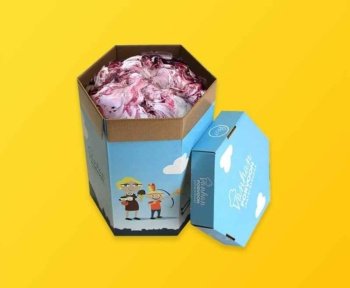The fashion supply chain encompasses every process involved in creating and delivering clothing, footwear, and accessories to consumers. It spans various stages, including:
- Raw material sourcing: The procurement of textiles, leather, and synthetic materials.
- Production: Transforming raw materials into fabrics and finished products.
- Distribution: Transporting goods from factories to retail outlets.
- Retail: Selling products to end consumers.
Each stage is interconnected, and inefficiencies in one segment can have ripple effects throughout the chain.
Key Components of the Fashion Supply Chain
1. Raw Material Sourcing
At the foundation of the fashion supply chain is the acquisition of raw materials. This step often involves: Visit now https://spiderofficial.us/
- Natural fibers: Cotton, wool, silk, and linen.
- Synthetic fibers: Polyester, nylon, and spandex.
- Sustainable alternatives: Organic cotton, recycled fabrics, and biodegradable materials.
Sustainability is becoming increasingly important, with many brands prioritizing eco-friendly materials to meet consumer demand for ethical fashion.
2. Manufacturing and Production
The production phase is multifaceted and typically includes:
- Design and prototyping: Sketching and creating initial product samples.
- Fabric cutting and sewing: Assembling garments according to design specifications.
- Quality control: Ensuring the finished product meets industry standards.
Advancements in technology, such as automation and 3D printing, are transforming this stage, improving efficiency and reducing waste.
3. Logistics and Distribution
Effective logistics are essential to deliver products on time. This stage involves:
- Warehousing: Storing inventory in strategically located facilities.
- Transportation: Utilizing air, sea, or land freight to move goods globally.
- Supply chain visibility: Tracking shipments in real-time to minimize disruptions.
Brands that optimize their distribution networks can achieve faster turnaround times, enhancing customer satisfaction.
4. Retail and Consumer Experience
The final stage is where products reach consumers. Retail formats include:
- Brick-and-mortar stores: Traditional physical locations.
- E-commerce platforms: Online shopping portals that offer convenience and accessibility.
- Omnichannel retailing: A hybrid model combining physical and digital channels.
Consumer behavior plays a pivotal role here, influencing inventory management and sales strategies.
Challenges Facing the Fashion Supply Chain
Globalization and Complexity
The globalization of fashion has led to extended supply chains, making coordination more difficult. Manufacturers and retailers often face challenges such as:
- Currency fluctuations
- Cultural differences
- Geopolitical tensions
Sustainability Concerns
The environmental impact of fashion is under scrutiny. Common issues include:
- Water consumption: High usage in textile production.
- Carbon emissions: Transportation and manufacturing contribute to global warming.
- Waste generation: Fast fashion trends lead to disposable clothing.
Consumer Demand for Transparency
Modern consumers want to know where and how their clothing is made. This has led to increased adoption of:
- Blockchain technology: Providing traceability from raw material sourcing to retail.
- Ethical certifications: Fair Trade, GOTS, and similar labels ensure compliance with ethical standards.
Emerging Trends in the Fashion Supply Chain
Digital Transformation
Digital tools are reshaping how supply chains operate. Innovations include: Check it now https://www.sp5derhoodieshop.net/
- Artificial intelligence (AI): Forecasting demand and optimizing inventory.
- Internet of Things (IoT): Enhancing supply chain visibility through connected devices.
- Augmented reality (AR): Improving product visualization for online shoppers.
Circular Fashion
Circular fashion promotes recycling and reusing materials, reducing waste. Strategies include:
- Upcycling: Repurposing old garments into new designs.
- Rental services: Allowing consumers to lease clothing.
- Take-back programs: Encouraging customers to return used items for recycling.
Nearshoring
To reduce lead times and transportation costs, many companies are shifting production closer to key markets. This approach offers:
- Faster delivery
- Improved quality control
- Lower environmental impact
Best Practices for an Efficient Fashion Supply Chain
1. Embrace Technology
Adopting modern tools like ERP systems and AI can streamline operations, reduce costs, and improve decision-making.
2. Foster Collaboration
Strong partnerships with suppliers, manufacturers, and logistics providers are vital for a resilient supply chain.
3. Prioritize Sustainability
Investing in eco-friendly practices and materials not only benefits the environment but also enhances brand reputation.
4. Monitor Key Performance Indicators (KPIs)
Tracking metrics such as delivery times, inventory levels, and production efficiency can help identify and address bottlenecks.
The Future of the Fashion Supply Chain
The fashion industry is on the cusp of transformation, driven by technological advancements, shifting consumer expectations, and sustainability imperatives. Businesses that adapt to these changes will thrive in an increasingly competitive landscape.




